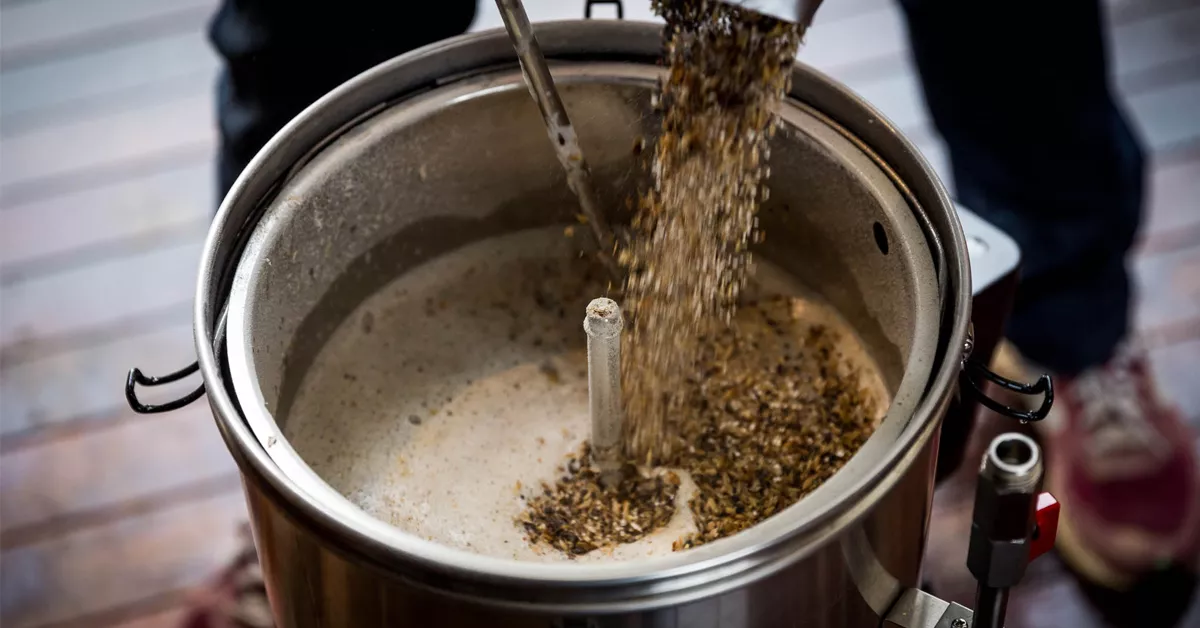One of the best things about beer and home brewing, is that unless you strictly want to adhere to the reinheitsgebot laws, there is so much room for experimentation with your brews and adjusting your recipes with different ingredients is a great way to be creative, cater closer to your own personal tastes and style and can be thus can incredibly satisfying. In this article we will discuss some tips on how you can experiment with you beer ingredients while brewing at home.
Ingredients
What can be used when experimenting with brews at home? Absolutely anything you want! I’m sure like us, you have seen on social media that every other week some brewery has been adding some completely bizarre ingredient to their beer, personally some of these beers can be a bit radical for most, but if it tastes good why not.
Malts & Adjuncts: There are hundreds of malts from Maltsters available all around the world and many are continually producing new malts that you may wish to use. Adjuncts are ingredients added that are not barley or wheat but that contribute to the fermentable sugars (honey, sugars, fruits, syrups etc.) Malts & Adjuncts are added either in the mash, end of the boil or in the fermenter. When playing with malts and adjuncts there are a few things to consider;
- The most important is remembering the diastatic power of the ingredient, for instance making a 100% roasted barley beer will not produce beer since there are no enzymes to convert starch into fermentable sugars.
- Maltsters/manufacturer descriptions and recommendations are a great guide to the flavour contributions of the malts.
- Taste the malts and adjuncts, by tasting these you can tell how they may contribute to the beer you can taste the malts together in the ratio that you will use them e.g. eat 100 grains made up of 80 grains of pale malt, 10 grains of Vienna malt, 5 grains of wheat malt and 5 grains of Munich malt. They can also be tasted by making a malt tea (miniaturized mash).
- Know your styles, whether or not you are brewing to a particular beer style the styles are a great guide. E.g. I want to make a German Pilsner, but black. Therefore what malts are used in a Schwarzbier.
- Beware the yeast! When and how you use your adjuncts will not only affect the flavour of your beer but also the alcohol percentage and carbonation as unless you filter your beer after fermentation yeast may continue to ferment and produce unexpected flavour and also potential bottle bombs.
Hops: With hops there is even more variety and also a multitude of different timings in the brewing process they can be used. Hops are used in the mash, first wort, any time during the boil, whirlpool (hop stand), any time during fermentation and conditioning and are often use during the serving process with casks and Randals.
- Use the descriptions from the suppliers as a guide to the flavours that the hops will contribute to the beer.
- Know how adding hops at different points in the brewing process relate to the bitterness and flavour contributions of the hops.
- Conduct hop trials, we will discuss how to do this later. But hop trials are great for trialling new hops or how they flavour and bitterness carry across to the finished beer when added at particular times in the brewing process. The finished beers can then be compared and contrasted or even mixed to get a sense of the flavours.
Yeasts & Bugs: Yeast and bugs are living organisms and therefore are the most unpredictable portion of the brewing process and will contribute a wide variety of flavours based on the strain and fermentation conditions.
- Use the manufacturer descriptions of the strains as a guide to the flavour contributions of the strains
- Parti-gyle your beers with different strains and compare and contrast the flavour contributions of different strains.
- Be consistent in your fermentation conditions for repeatable results especially temperature control for the specific strains.
Spices & Additives: Spices and additives are ingredients like nutmeg, woodchips or other flavours which add flavour but do not contribute fermentable sugars. These can also be ingredients like salt additions for the water profiles which can enhance specific features of your beer. Together these ingredients are generally where the most creativity occurs. Like malts and adjuncts these ingredients are often used in the mash, end of the boil or in the fermenter.
- Spices and additives added in hot side of the brewing process are less of a contamination risk, however less of these flavours often make it to the finished beer.
- Spices and additives added to the fermenter can easily contribute too much flavour since they sit in the beer much longer. Try making an alcoholic tincture or tea with the spice to extract the flavour, take 100 ml of beer and add the tincture or tea to this until the desired flavour is reached then scale up the amount used for flavouring the whole fermenter. This will achieve a more controlled stable flavour.
- Spices and additives can be added to a glass of finished beer to see how the flavour pair with a specific beer.
